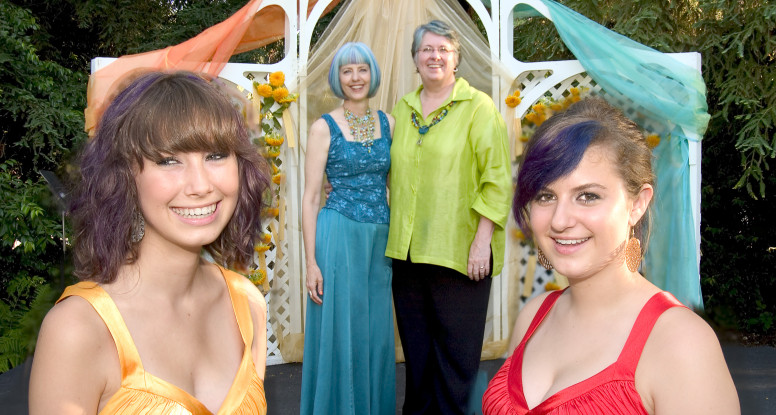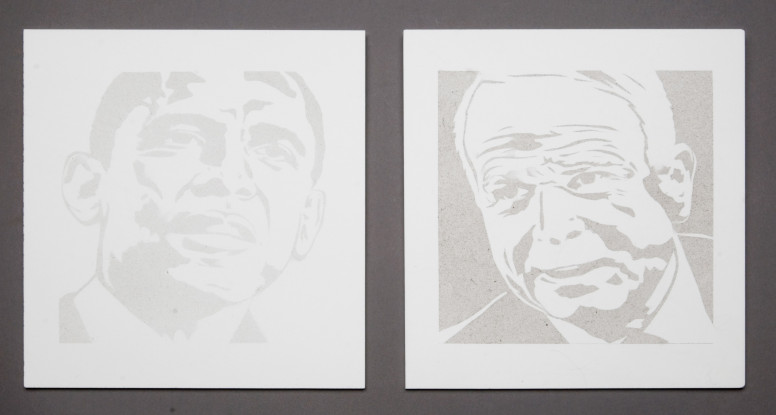I’m very proud of my latest video art work called Our Wedding which was created in collaboration with my life partner Sue Maberry and our daughters Xochi and Marka. It just opened in an exhibiton called Love Never Dies at Form + Content gallery in Minneapolis. The exhibition also includes Sue’s and my artists’ book, Marriage Matters, which is one of our art works that incorporates Sears portraits of gay and lesbian families. The book and video were called the “centerpiece” of the exhibition by Minnesota Public Radio (though they failed to say our names!). Here’s a link to the story and some wonderful shots of some of the other artists’ works in the show. http://minnesota.publicradio.org/collections/special/columns/state-of-the-arts/archive/2010/05/love-never-dies.shtml.
The video Our Wedding was produced by Sue Maberry and me, but the impetus for it came when our daughter Xochi wrote an essay about our 2008 wedding for a school application. Fifteen-year-old Xochi is the writer/narrator and her twin sister Marka is the director/editor. Sue and I served as producers/editors. Soon I will begin entering it in youth and lesbian and gay film festivals. Here’s a description of the 7 1/2 minute video art documentary.
Twin daughters of lesbians collaborate to tell the story of what their mothers’ legal marriage means to them. The 14-year-old girls served as “documaidens,” carrying flip video cameras instead of bouquets to record the ceremony. Phranc, the All-American Jewish lesbian folk singer, wrote and performed an original song for the event. The story unfolds against the backdrop of the battle against California’s Proposition 8. Not your typical home movie, this short documentary offers a glimpse into the life of an artistic lesbian family.





